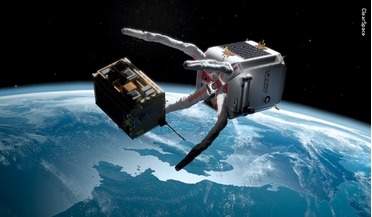 September 2020
Tackling space debris - a global priority
September 2020
Tackling space debris - a global priority
... that increases the overall drag on the spacecraft, expediting the gradual decay of spacecraft orbit. For active debris removal (ADR) methods, on the other hand, the spacecraft nearing its end of mission utilises onboard thruster(s) to deorbit...
 September 2018
Debris or not debris - is that the question?
September 2018
Debris or not debris - is that the question?
...) does little to inspire confidence in this regard - lest we underappreciate that the envisioned guideline(s) with respect to Active Debris Removal (ADR) are among the most contentious and heavily debated, leaving little chance of their being adopted...
 May 2019
Active debris removal faces legal minefield
May 2019
Active debris removal faces legal minefield
... the most cost-effective and efficient method of debris mitigation is Active Debris Removal (ADR) Items 6 and 7 of the Space Debris Mitigation Guidelines encourage states to take the necessary measures to remove objects from low Earth orbit (LEO) and...
 September 2023
Getting a grip on space sustainability and space debris
September 2023
Getting a grip on space sustainability and space debris
..., and we can’t do that unless we work with others, and through others on a global scale. The UK-sponsored Active Debris Removal (ADR) mission is getting a bit of publicity now. Could you explain why it’s important and what we could expect it to lead...
 January 2023
Clearing space junk from orbit
January 2023
Clearing space junk from orbit
...space. To prevent collisions involving derelict space vehicles, a tow-truck service – formally known as active debris removal (ADR) - is required. To perform this service, a robotic spacecraft is launched to rendezvous with a derelict object, capture...
 April 2025
Space sustainability and the role of space situational awareness
April 2025
Space sustainability and the role of space situational awareness
...increases the aerosol contamination of the stratosphere due to the composition of the spacecraft. Active debris removal (ADR) is directed at large pieces of space debris, including satellites and rocket bodies, since these are too large to fully burn...